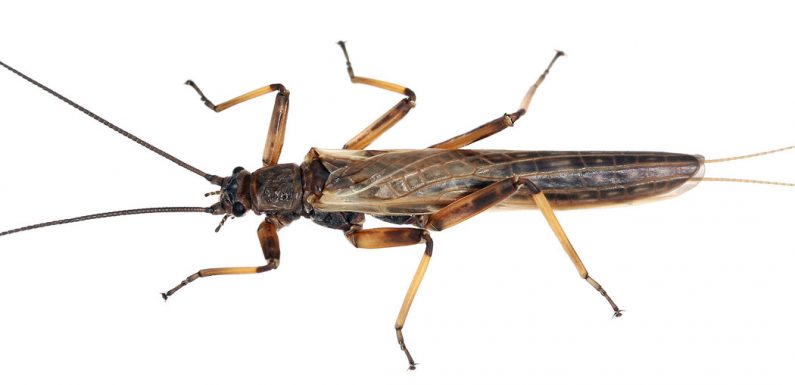
New Zealand’s South Island was once covered in thick forest, the trees breaking like a dark green tide around the grassy mountaintops. After the arrival of Māori settlers about 750 years ago, some hillsides were cleared of their trees by humans using fire, and the foliage has not returned. For the organisms living in these forests, their habitat changed nearly overnight from sheltered woodland to exposed, windy grasslands.
Since the forests burned, little winged insects called stoneflies have changed as well, researchers have found. In a kind of evolutionary pivot over the course of just a handful of centuries, the stoneflies living above the tree line have lost the ability to fly, suggesting that man-made changes to an ecosystem, such as deforestation, can radically reshape the bodies of its inhabitants. The discovery was published in the journal Biology Letters on Wednesday.
Charles Darwin noticed that insects on islands have a curious tendency to be flightless, perhaps because flying is dangerous when you are tiny and winds are strong. In New Zealand, scientists had found flightless stoneflies on many different mountains, said Jon Waters, a professor at the University of Otago in New Zealand who is an author of the new paper. It was not initially clear why — whether there was something about the altitude that favored a flightless form, or if there was something else going on.
To answer the question, he and his colleagues collected stoneflies at five sites, walking up through the forests onto the bald crests of the mountains. They caught insects as they went up the slopes, recording their locations. Looking at all the data, they were surprised to find a very clear trend.
“We found that there was this amazing transition from winged populations to flightless populations as you go up,” said Dr. Waters. “Wherever we looked, that correlation was linked to where the trees stopped, not a particular altitude.”
Because the switch happened at the tree line, rather than at a specific elevation, it suggests that the exposed situation above the trees has favored flightlessness in stoneflies. Perhaps, as in the case of Darwin’s island insects, wind on the heights makes flying a liability.
It is possible that in some places, even before the forests burned, there were already flightless stoneflies that simply expanded their territory after the fires. A genetic analysis of the stoneflies showed that three of the five populations the researchers looked at were quite different from their lowland winged brethren, implying that they may have been evolving on their own for a while.
The other two, however, had smaller differences, suggesting the change might be recent — recent enough to be since humans arrived on the island.
The apparent swiftness of the change recalls the case of the peppered moth, whose coloration shifted from light to dark as air pollution from the Industrial Revolution in England darkened the trees it lived on — light moths, of course, were more visible to predators in their changed environment. It does not take millenniums for animal populations to be altered by natural selection, these cases show.
“You go into the trees and you’ve suddenly gone into a different population. It’s almost like magic that evolution seems to be working so clearly and so effectively over a short distance in some of these cases and a short time frame,” Dr. Waters said.
Now the researchers are looking deeper into the genetics of the stoneflies to understand what it is that changes as the insects lose the ability to fly. The details may reveal whether stoneflies’ apparent flexibility arises from new mutations, or whether their flightlessness draws on variations that already existed in their ancestral populations and was just waiting for the right moment.
Source: Read Full Article